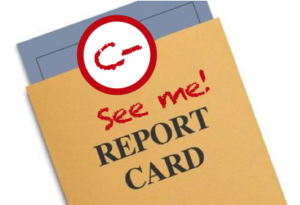Over the last year or so, I’ve seen more than a dozen companies with a meta-product management problem that I’m calling the “No Head of Product Syndrome.” This is where medium-to-large companies have product managers sprinkled around, but without a single point of leadership or concentration. They may report into various engineering VPs, business unit managers, CxOs, innovation units, or market strategy groups… but wherever they report, these scattered product managers lack common models, role definition, strategic cohesion, tribal mentoring to grow skills, and political support for running experiments or doing validation.
This syndrome creates frustration and wasted effort in the trenches. Individual product folks are left to fend for themselves. They are missing an organizationally savvy Head of Product who can create conditions for product managers to succeed.
Every disease needs some symptoms so that we can do a differential diagnosis. Does your product organization exhibit these?
- No agreement about what’s the absolute #1 priority across the portfolio. Without a hard-nosed product leader forcing tough trade-offs at the executive level, everything is our top priority. Cross-product-dependencies proliferate, and each product manager prioritizes work for their product at the expense of others. There’s no coordination about which products are profit centers, which are supporting players, and which are next year’s potential stars.
- Shipping Your Org Chart. When customers need a fistful of your company’s products to assemble a solution, and each of your engineering units is working independently to capture revenue for its own pieces, your product catalog can become a mirror image of your business units. Product names are unrelated, each has a unique pricing unit (per seat subscription, transaction fee, one-time fee) or licensing terms, and overlapping features slow down sales.
- Not hiring for product experience, aka “the craft.” Engineering-led units strongly favor developers in the interview process, and Sales/Marketing-led groups focus only on segment SMEs. There’s no one tilting the hiring cycle back toward hands-on product expertise. Some product managers have raw talent, but most lack judgment and “product taste” and political savvy. (See my related rant.)
- No single point of escalation. When major account teams need some customer-specific feature jammed into the roadmap, they have lots of ways to circumvent the product manager – who eventually learns that s/he can’t really say “no” or manage priorities.
- Date-driven execution trumps learning and validation. Product managers are being graded on productivity metrics (“did we ship on time?”) but not on good market validation (“will lots of customers pay us to solve this problem?”). We’re writing user stories and submitting roadmaps, but without much strategy.
- Each product manager is doing a different job. We know that Sales wants Product on every demo and customer call; Engineering has a full calendar of agile ceremonies; Marketing expects web-ready success stories and lots of booth duty; Support escalates dozens of hot customer issues. That adds up to 375% of a long work week, so each product manager chooses which corners to cut and which stakeholders to underserve. There’s no one at the exec level to negotiate more global role boundaries and assure adequate product staffing, so complaints and unmet expectations abound.

Management thinks most product managers are failing. Expectations are high, but negative feedback substantially outweighs praise. It’s easy for execs to miss the systemic nature of the underlying problem and misattribute the cause… framed as “product management isn’t that hard but we have to replace much of the team with more motivated/strategic folks.” And HR thinks of this as a skills gap: a few days with an outside trainer will provide a few missing templates and inject motivation.
Sounds gloomy. Not the fast path to CEO-land that we remember from The Hard Thing About Hard Things. But a clear-eyed assessment of the situation lets us decide whether (and how) to raise the issue or take action.
What to Do If You’re an Individual Product Manager
- First, recognize that this is happening elsewhere, and isn’t your personal failure. (See Anastasia Shakhaeva’s thoughts on unreasonable expectations.)
- Second, note that being an undermanaged product person in a semi-chaotic organization is a lot like being the first product manager at a 10-to-30-person startup. You’ll need to devote time/energy to handle these next-level-up symptoms.
- Third, start a gently respectful lobbying campaign and encourage your product peers to join in. Find interested execs and non-product functional leaders, identify how a Head of Product could provide mentoring/role clarity/better market outcomes. Unless you’re making a play for that job yourself, emphasize that you’ll be able to contribute more effectively – and that others feel the same way. As product managers, we know that framing a problem is essential to solving it.
What to Do If You’re an Executive
- First, confirm if you’re seeing symptoms. Are frustration and turnover high within Product, and morale low? Are we pushing templates and review processes instead of strategy? Do product managers complain that they’re not allowed to talk with customers? Watch for long discussions about what’s wrong with Product when no one in the room represents Product.
- Second, avoid the ‘non-product product leader’ trap. That’s where you draft some exec who’s never supervised product management teams to be Chief Product Something. You’d naturally insist that VP Sales candidates have been successful at selling, and then run a sales organization… that VP Engineering candidates have built great technology and overseen tech teams – what Ron Lichty calls managing the unmanageable. You’d never consider a CFO with only second-hand theoretical knowledge of corporate finance. Yet many exec teams unconsciously think that product management can’t be so hard, so they pick an engineering director or sales lead or senior project manager as CPO.
- Third, expect to actively source candidates from the outside. (If you had a great product leader-in-waiting, you would probably have promoted her/him already.) I’ve helped 4 clients screen VP-level candidates over the last year, and consistently found stronger talent externally. Watch out for functionally biased interview teams where engineers really want to hire other engineers (“if they can code, then figuring out this product thing should be easy”) and sales/marketing leads who mostly value market/subject expertise (“we need someone who already knows our space. Healthcare/security/ecommerce/analytics/IoT is unique, and only people from our immediate competitor space can understand it.”)
- Finally, avoid “just ship on time” scorekeeping. Instead, find someone who can make sure you’re shipping the right thing.
Sound Byte
Like other functional specialties, product management needs leaders who recognize and reward great product work; who know how to hire/mentor/grow product folks; and who build executive-level support for doing the right things. Without seasoned product leaders, each individual product manager has to go it alone.
(The headless suit image at top is lovingly clipped from Terry Gilliam‘s brilliant Python work.)

